LA-based producer Julian Scanlan might still be working at a Best Buy in New Jersey were it not for a SoundCloud violation. Less than a year ago, he was toiling away in customer service, helping people buy TVs and hard drives for little more than minimum wage. He was 18 years old,living at his mom’s house in suburban Mount Laurel while taking classes he wasn’t excited about at a local community college. In his spare time he watched anime, played Yu-Gi-Oh cards, and produced filthy dubstep and electro under the name DJ Swoon. The tracks he cranked out in the basement earned him modest local acclaim.
Then the unthinkable happened: an unauthorized remix he’d posted violated SoundCloud’s terms of service, and his account was deleted. “At the time I was like, ‘Oh my god, 8,000 followers all gone!” he remembers, back in Mount Laurel visiting his mom during a rare break from tour in late November. “Oh no! It’s over!’”
Videos by VICE
Scanlan was despondent, until a friend convinced him to seize the opportunity for a fresh start. “It ended up being the greatest thing that ever happened to me,” he tells me. “It pushed me to create Slushii.”
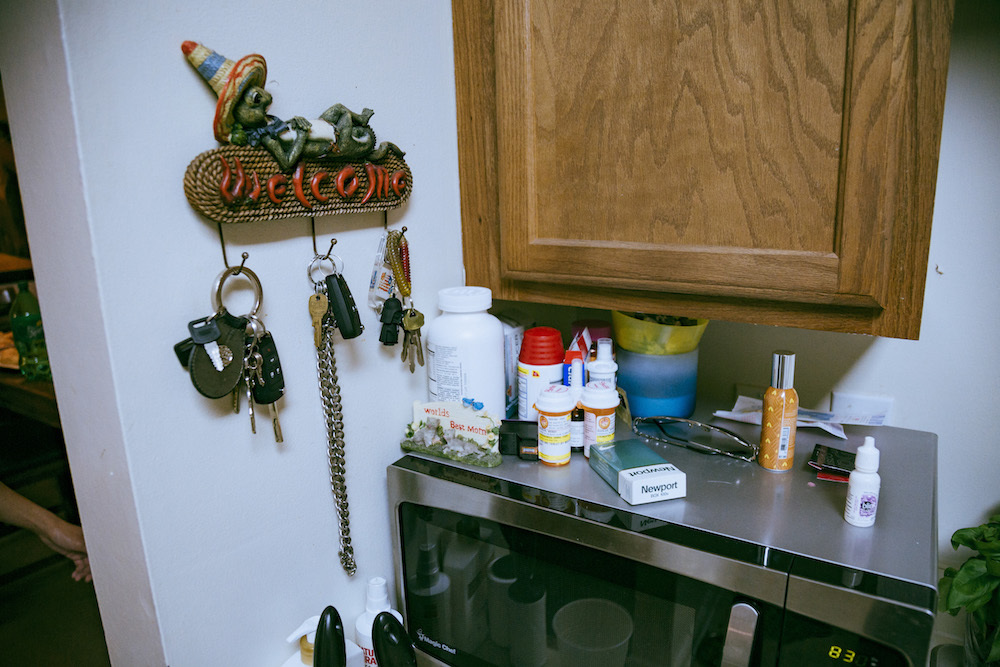
If you aren’t a young raver with a few EDCs under your belt, the name Slushii might not mean anything to you. If you are, it probably means a lot. In 2016, Slushii was one of EDM’s biggest stars—he burst from obscurity to ubiquity over a few months, racking up millions of plays with high-voltage dubstep and trap remixes of acts like Marshmello and the Chainsmokers, as well as songs from his self-released debut album, Brain Freeze. These releases scored him tours with Flosstradamus and Marshmello as well as high profile guest slots on OWSLA’s Beats 1 show and BBC’s Diplo & Friends. The first ever Slushii DJ set took place in front of thousands at Hard Summer in LA.
Credit Slushii’s rapid rise to his instantly recognizable sound. True to his name, he frappes the hallmarks of contemporary EDM production into a saccharine neon soup of helium vocals, giddy trance synths, trap drums, and nuclear dubstep drops. His songs smash together cutesy and heavy elements with the absurdist glee of anime fight scenes. His logo pictures an anthropomorphic kawaii smoothie modeled on an obscure Yu-gi-oh card, and he wears it emblazoned on a custom hockey jersey at every show, offset by a shock of green hair and penchant for goofy hats. But Slushii’s fierce contingent of fans, the self-identified #SlushiiGang, aren’t just in it for the party; they’re drawn to his music’s real emotional core, a quality he describes as “feelsy.”
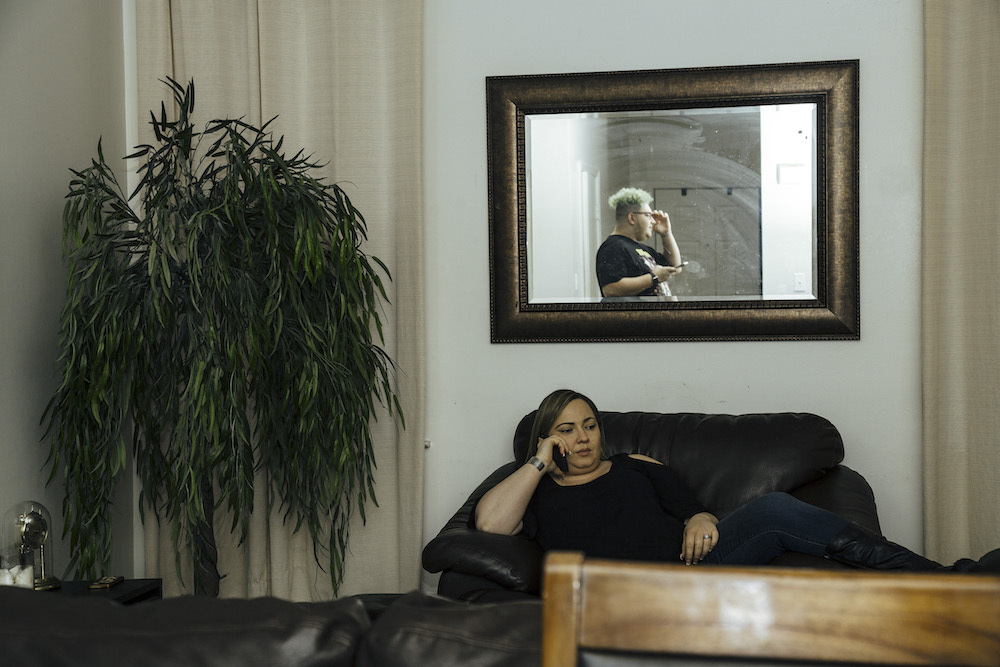
When I travel to Jersey to meet him, it’s the Monday after Thanksgiving. He arrived home from a months-long tour just the night before, so his mom, Wendy, is in the kitchen making belated turkey and stuffing. Outside, in the gentle late fall air, Mount Laurel looks like an environment from the Sims—a flat suburban expanse studded with beige stucco big box stores and turnpikes. Scanlan grew up here, in a narrow duplex on a nondescript street in a tract housing development. His mom supported him and his younger sister by working as a hairdresser at a mall nearby. His father wasn’t in the picture, but music was; back in the 90s, Wendy had a brief career in New York’s latin freestyle scene, and used to perform at gigs while pregnant with Scanlan. Today, the only decorations lining the living room walls are framed interviews with her son from local papers (for his musical projects that predated the Slushii era), though I also spot one of her own records in a glass case. “He would kick in time to the beat at my shows,” she recalls. “That’s when I knew he’d be a musician.”
Early in his life, Scanlan was diagnosed with Asperger’s Syndrome, which he says interfered with his ability to make friends and read social clues. As a result, he was taunted viciously in middle school—”People said I looked weird or smelled weird, just stupid bully stuff,” he says—so he retreated into himself. “I was split off from everybody,” he recalls. “I had absolutely no life. I just felt like I was so different from anyone else, and I felt so detached from anything. I was so down all the time and so depressed, and if it wasn’t for music, I probably would have done something I really regretted. I’d come home from school and not want to think about anything. Then I’d walk around and put my headphones on and drown it all out.”
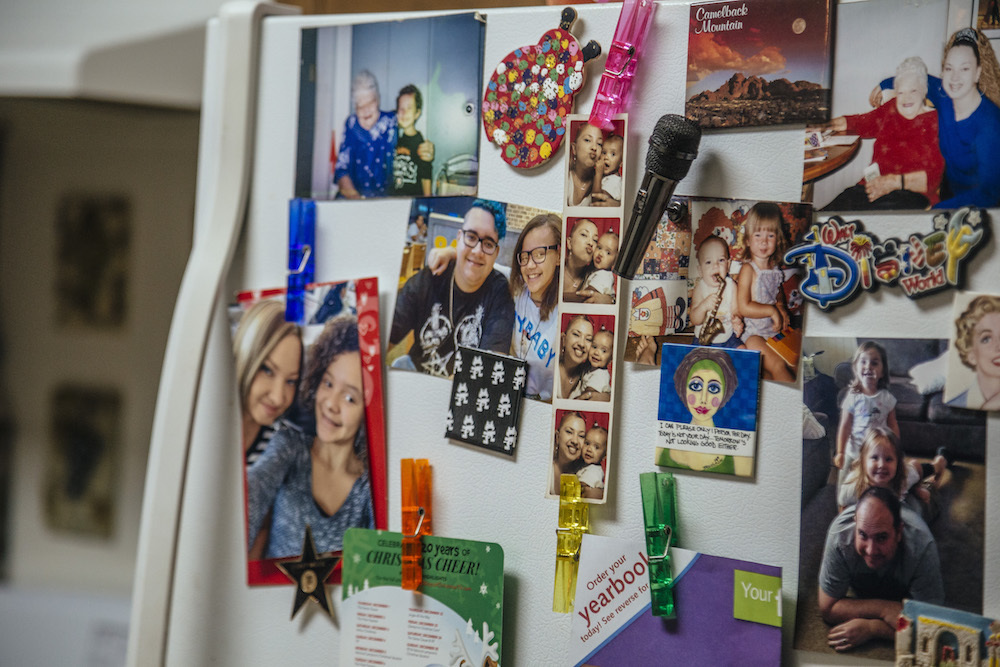
At age 13, Scanlan chanced upon a song that would end up changing his life. “I heard Skrillex’s remix of ‘In For The Kill’ by La Roux one day, and that flipped my entire world upside down,” he remembers of the 2010 song, which pretty much wrote the playbook for combining heavy dubstep drops with pop melodies. “I emotionally connected with something about his music. So much of it is turn up, which is awesome, it’s so fun. It also has this flip side where it’s this feelsy, ‘We’ve been there too’ sort of vibe.”
While his mother finishes up dinner, Scanlan takes me on a walk around the neighborhood, on streets bordered by tidy lawns and identical houses. We arrive at a small lake behind Scanlan’s subdivision, where he used to sit alone after school. “It eased my mind,” he says. “I’d hang out here for maybe an hour and come back home and everything would be fine.” As dusk fell, he told me the story of how his life began turning around.

After finding Skrillex, Scanlan spent the next few years honing his electronic production skills, making friends in the community online, and hustling for local gigs under his DJ Swoon alias. He says making tracks offered an escape from the emotions that threatened to drag him down. “I could either be sad and possibly harm myself and fall into this super deep hole, or I could put myself into making music.” As his skills developed, his social confidence grew. “I wasn’t going to let a diagnosis become my life,” he says. “I just forced myself to get out there and meet people. Around junior year of high school, I finally broke free.”
Over time, music became a way for him to process emotion and communicate with others. “I look at a lot of things in a weird way, because I have Asperger’s,” he explains. “Part of me has never been able to relate with people in general—I’m too afraid to tell you how I feel, but if I make a song out of it, then I won’t feel as bad about telling you how I feel.” That’s part of what makes his productions so evocative. For Scanlan, EDM isn’t just a soundtrack to a big night out. It’s a lifeline that enables him to unlock the social limitations placed on him by his diagnosis and to communicate straight from the heart. Accordingly, Slushii and his contemporaries seem willing to play a role once filled by pop punk and emo bands. Skrillex’s first gig, singing for screamo luminaries From First to Last, shows the connective tissue between that tradition and EDM; sonically and emotionally extreme, both genres offer a direct appeal to outcasts.
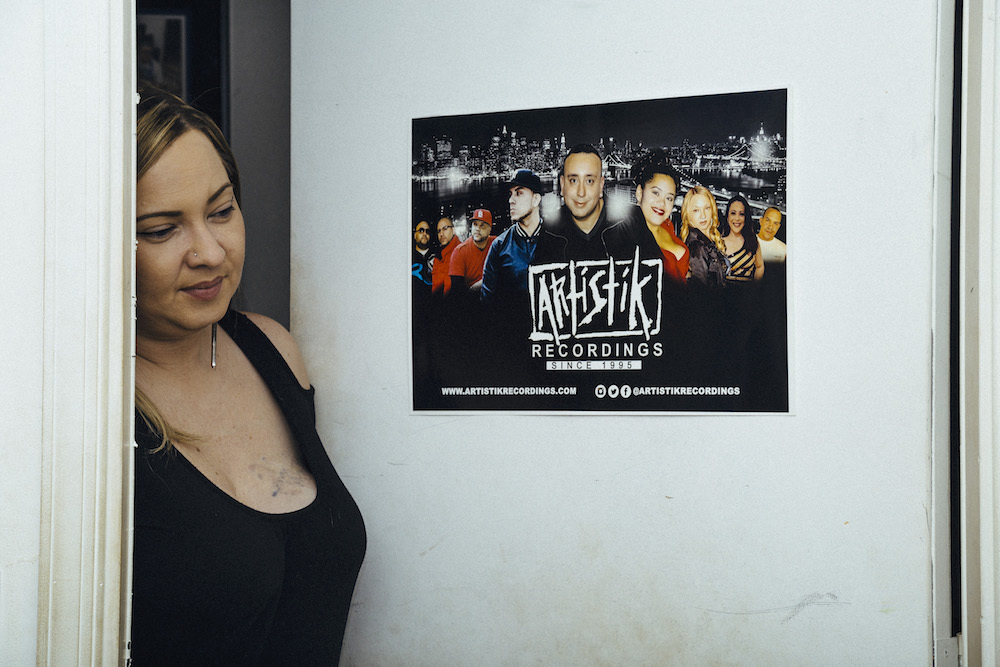
In June of 2015, Scanlan came up with the name Slushii, and started posting a handful of remixes online. “I had always been told about the book The Secret—you have to visualize your dreams,” he says. “So at the beginning of this year, I made a vision board. I printed out two copies—one for my studio and one for my bedroom. It said ‘Goals for 2016: get [this many] followers, play a major festival, get signed to a OWSLA, get Skrillex’s attention.’”
It worked: in February of 2016, his exuberant tunes caught the ear of EDM uber-manager Moe Shalizi, who also works with Marshmello, Jauz, Ghastly, and others. In May, Slushii self-released his debut album Brain Freeze, which showed a more contemplative side; standouts like “Make Me Feel” featured spacey beats and Scanlan’s own pitch-shifted singing, landing closer to Flume than Flux Pavilion. Shortly after, Monstercat and OWSLA tapped him for releases, and he watched his SoundCloud following balloon into the hundreds of thousands.
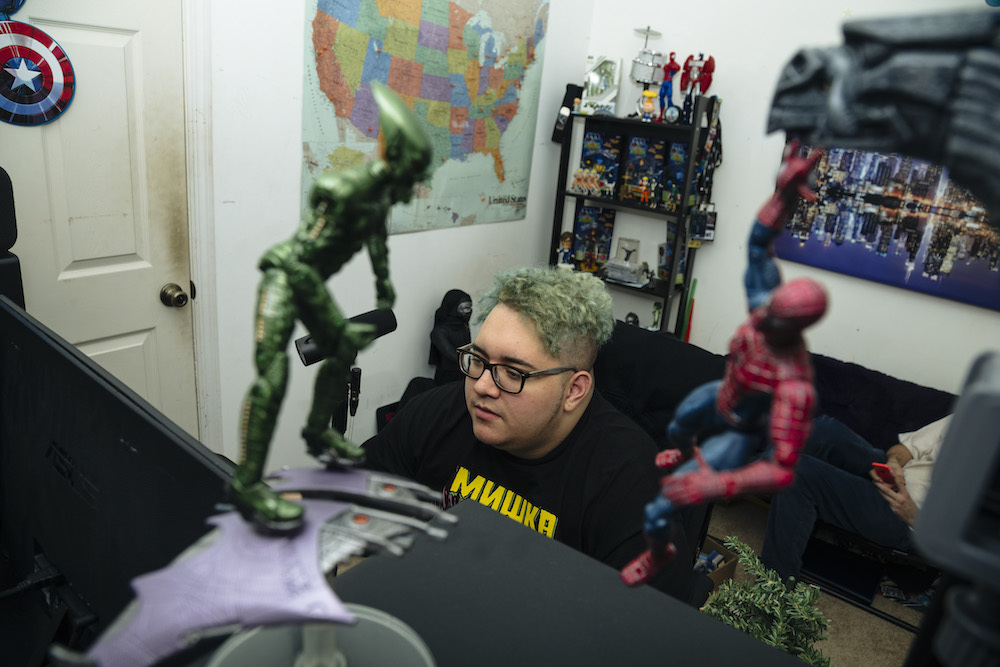
But Scanlan’s success didn’t feel real to him until it was validated in person, by his biggest hero. Last spring, he and four friends drove down to Florida to Sunset Music Festival to catch Jack Ü’s headlining set. Scanlan was backstage when he heard the duo play his remix of Wiwek and Skrillex’s “Killa”. “I turned to my friend and asked, “What would you do in this situation?”” he remembers. “He said, ‘If I was you, I would run up there, tap Sonny on the back, and freak out!’”
Scanlan maintains that earlier in his life, he wouldn’t have made the move. “I never, never, ever wanted to take risks,” he says. “I always played it safe. I played it safe getting a job at Best Buy, I played it safe by telling myself, ‘I’ll do music casually.’” But that night, he decided to go for it. “I ran up as they were playing it, and I tapped Sonny on the back,” Scanlan says. “He was obviously super into the set, and he didn’t turn around at first. The stage guy tried to grab me cause he thought I was some crazy fan. Then Sonny turned around and he was like, ‘Ohh!’ That moment was important for me—that was when it became like, ‘Okay, this is serious now.’” Over the summer Skrillex would return the favor, surprising Slushii during his debut set at Hard Summer.

During our afternoon together, Scanlan’s formerly crippling social anxiety is hard to detect. After our walk we drive to one of his favorite local haunts—a trampoline palace called the Sky Zone, where he’s hailed as a local celebrity by the staff. “Look, there goes DJ Milkshake!” jokes one teenage employee, as Scanlan leaps off the bouncy floor and dunks a basketball. He offers the manager guest list spots for his upcoming show in Philadelphia. The gesture is appreciated but unnecessary—the manager has already bought tickets.
On the way home for Thanksgiving dinner, we stop at the Best Buy where Scanlan used to work, and he poses for a picture in the parking lot beneath the massive blue sign. I ask how it feels to return there after months on tour. “It’s weird, man,” he murmurs quietly, before turning on a thousand-watt smile and stepping inside to see his friends.
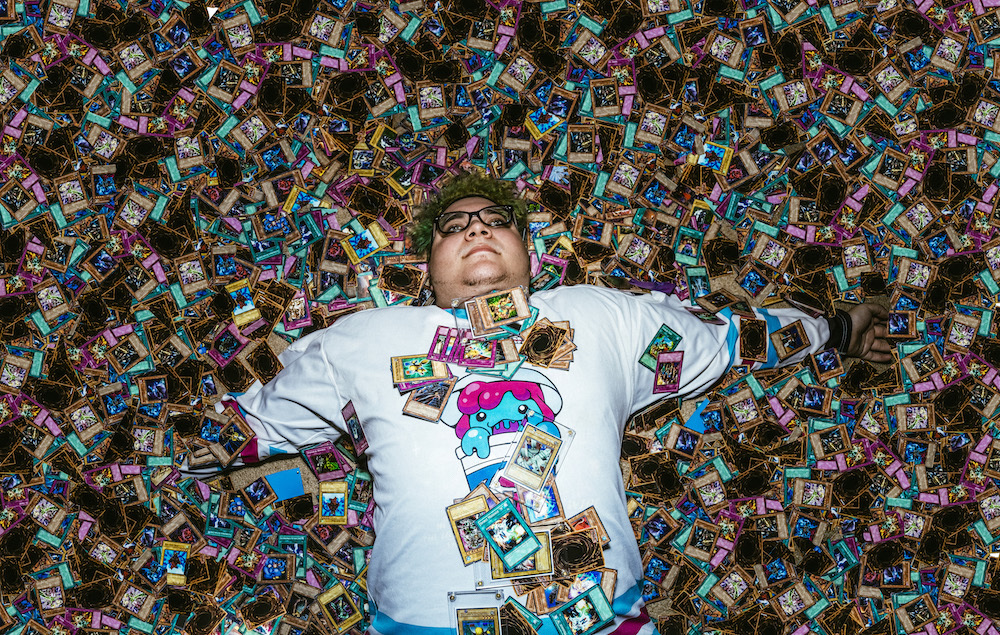
This post was originally published on THUMP.
More
From VICE
-

Eva Pascoe, founder of Cyberia, poses at the cyber cafe in London. All photos courtesy of Eva Pascoe, Ali Knapp, and Roger Green. -

(Photo by Niels van Iperen/Getty Images)


